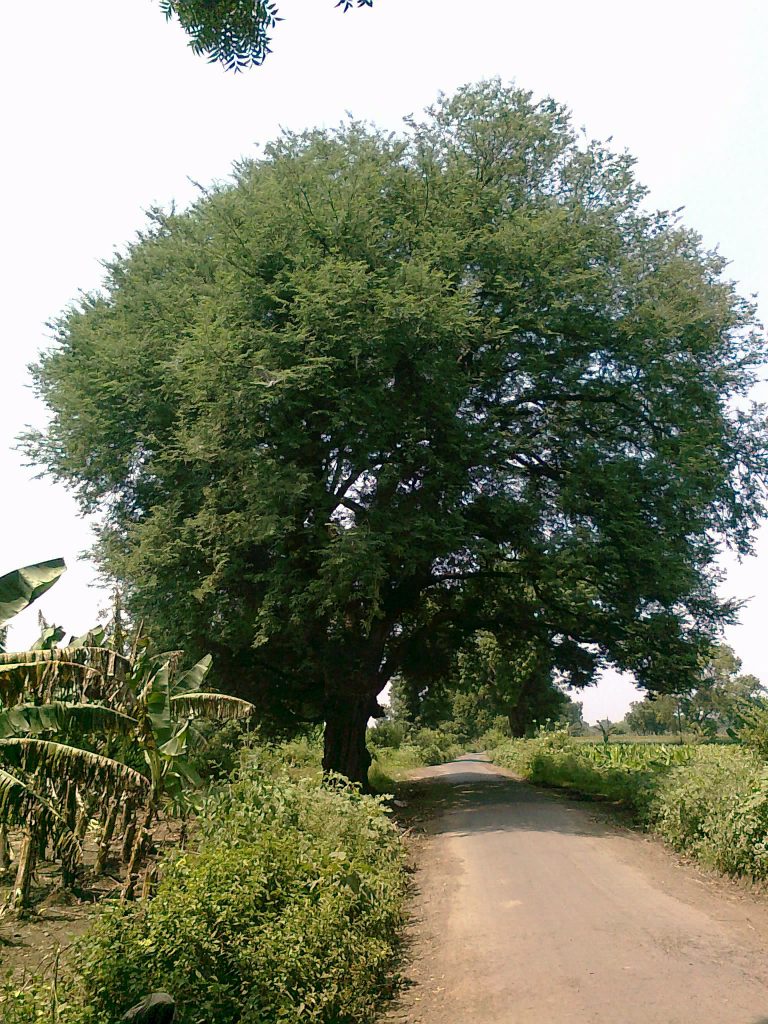The cultivation of tamarind tree in the open ground in Suffolk County is only possible in a well-sheltered, frost-free place.
This tree is well suited to roadsides and in parks and gardens, even though the falling fruit can impede traffic. Space the trees 7 to 10 m apart in a row. In the orchard, spacing depends on the vigor of the variety: 13 × 13 m or 10 × 12 m.
Pot cultivation is quite feasible, even if supply is limited. You can buy pods in Asian shops and germinate seeds. The tamarind tree can grow for more than ten years as a houseplant, even if it loses its leaves from time to time.
When to plant the tamarind tree?
In the spring.
How do you plant it in a pot?
Use a substrate made up of sand and silt, or if you don’t have any sandy soil. Install a drainage layer in the bottom of the pot.
Handle the plant with care when transplanting, as the plant does not tolerate root injuries and drying out. Always keep the root ball moist when lifting. If necessary, cut the damaged roots cleanly.
How do you plant it in the ground?

Be careful not to damage the roots when planting. Isolate the plant, as it does not tolerate proximity to other plants.
Maintain it with a stake for the first 4 years.
In semi-arid areas, make sure to shade the young plant during the first month and water it during the first dry seasons.
Growing and caring for the tamarind tree
In the ground
Remove weeds at the foot of the young plants or hoe during the dry period to break the capillary action; as the old saying goes, “one hoe is worth two waterings”.
In pots
Bring in compost before vegetation resumes or fertilize potted plants with a fruit fertilizer while new shoots are growing.
Place the plant in a veranda or heated room during the winter and reduce watering. Leaves may suddenly fall off and then grow back after a few weeks of rest. Adjust the watering according to the amount of leaves and make sure that the surface substrate is allowed to dry between waterings.
Trimming the tamarind tree

It is not mandatory, but trimming is essential if you want to keep your tamarind tree healthy. Simply remove misplaced branches by cutting them off at their base or just above a branch. It can be done throughout the year.
Anthony Montani Landscaping Inc. has a team of experienced horticulturists to grow treesto suit your lifestyle, preferences and budget.
Diseases, pests and parasites
The tamarind tree doesn’t really have any parasites or diseases in our country.
In warm countries, the trees are mainly infested by scale insects (Aonidiella orientalis, Aspidiotus destructor, Saisetia oleae, Nipaecoccus viridis, Planococcus lilacinus), by a moth (Pachymerus gonagra) and by termites in China.
Damage caused by groundnut leaf hopper (Caryedon serratus) is significant during storage of pods.
Harvest
When and how to harvest the tamarind?

The pods (tamarinds) are harvested at various stages depending on the intended use, bearing in mind that they do not ripen once harvested. The ripe fruits will have a hollow sound and are lighter than the green ones.
Use pruning shears, at the end of a pole if the height requires it, as the pods are held by a solid stalk and are easily crushed if pressed with the finger. Yields reach 150 to 200 kg per mature tree, or 12 to 16 tons per hectare per year.
Conservation of tamarind or Indian date
Put the tamarind trees to dry in the sun, protected from pests by plastic sheeting or glass. Different preservation methods are used in different countries.
In Egypt and Asia, the pods are salted like cucumbers or peeled and pressed with sugar or salt. The pulp is then recovered and stored in barrels or crates in a cool, dry place.
In Mexico and Jamaica, the peeled fruit is stacked in barrels. A boiling, almost crystallized syrup is then poured in to form a compact block. The barrel is closed after cooling and travels at low temperature.
Caution: Ripe fruit tends to cause constipation, while young fruit has a slightly laxative effect.
Multiplication of Tamarindus indica
There are several ways of propagating tamarind trees: sowing, cutting, layering, grafting. Plants resulting from vegetative propagation (cutting, layering, grafting) generally have less vigor and have the advantage of producing larger, better and more fruit.
Sowing
Sow in spring.
Pick the tamarind seeds from ripe pods, preferably fresh. Germination is easy and takes only 7 to 10 days. If the pods are no longer fresh, soak the seeds in lukewarm water for 24 hours or cook them in water for 7 minutes and then let them cool slowly. The seeds have a long shelf life if stored in dry sand in a sealed box.
Put the seeds to germinate in a large, deep pot with enough space between them so that they do not have to be transplanted too early.
In the nursery, make a furrow of light sandy silt and bury the seeds 1.5 cm deep. To avoid transplanting, observe a minimum spacing of 30 cm between seeds. Seedlings require shade from the moment they germinate until they reach 25 cm in height. You can plant the 80 cm high seedlings directly in place just before the rainy season.
Fruiting begins 8 to 12 years later and occurs periodically throughout the year depending on latitude and altitude.
This post will continue in Part 3 to cover more topics on the Tamarindus indica. Hope you have liked this post and you’ll share your comments in the section below.




what kind of weather is needed fo a tamarind tree to thrive?
Tamarind prefers tropical and subtropical, dry and windy climate.